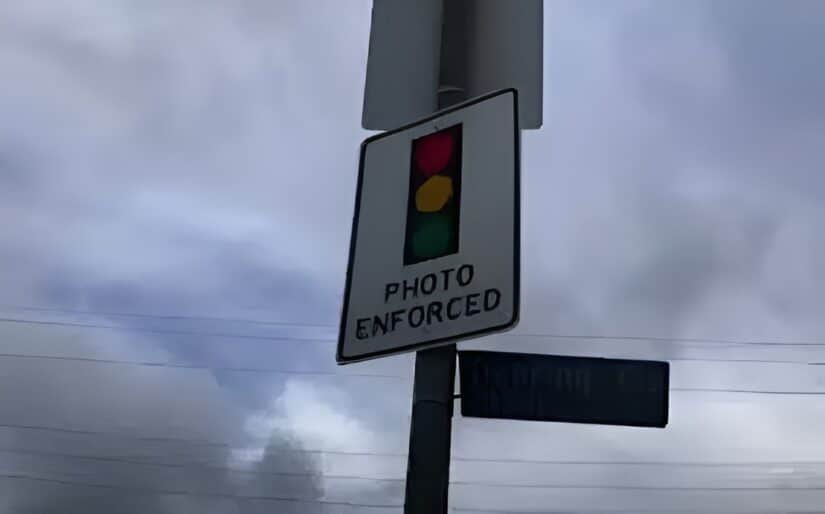
When you see a small device on the top of traffic lights in America, you might assume it’s there for traffic enforcement or to catch traffic violations. In reality, many of these devices are not red-light enforcement cameras at all. Instead, they’re part of traffic management systems that improve traffic flow, reduce traffic congestion, and help first responders reach traffic safety incidents more efficiently.
Understanding the difference between Red Light Cameras used for traffic enforcement and traffic sensors designed for traffic light timing and traffic flow is key for drivers in the United States, especially when analyzing cases like a Greenville accident.
Red Light Cameras vs. Traffic Management Devices
Red-Light Cameras
Red-light cameras are built for one purpose: catching red-light runners at signalized intersections. These devices photograph the vehicle and its license plate, often issuing a Notice of Infraction through the mail. In some states, they’re tied to a School Zone Speed and Red Light Photo Enforcement Program or other traffic signal enforcement systems.
While controversial, research by the Insurance Institute for Highway Safety and the National Highway Traffic Safety Administration shows that red-light technology can reduce fatal crashes and red light running accidents. Still, critics argue that such systems can feel like a traffic Stasi, prioritizing automated ticket revenue over safety.
Common penalties include speeding citation, points on your license, higher insurance rates, and additional court costs.
Traffic Cameras and Sensors
On the other hand, most Traffic Cameras are not for law enforcement but for traffic management. These intersection safety cameras are designed to monitor traffic congestion, adjust light timing, and ensure smooth traffic flow. They are often connected to programs like Vision Zero that aim to reduce fatal crashes.
Some devices aren’t cameras at all but traffic sensors such as inductive loop sensors, acoustic sensor units, optical sensor systems, or even thermal sensor and thermal imaging sensors. These tools help detect vehicles, pedestrians, and cyclists, ensuring traffic signals operate correctly.
Unlike Photo enforcement violations, these devices aren’t issuing an automated ticket. They exist for slowing the cars, improving neighborhood speeds, and enhancing vehicle stopping distances at signalized intersections.
Legal, Government, and Public Oversight
Cities and agencies like the Kent Police Department, Kent Municipal Court, and Washington State Department of Licensing have been involved in disputes over contract provision, Kent City Code 9.36.140, and RCW 46.63.170 regarding Automated traffic safety cameras.
Journalists such as the Dallas Morning News and outlets like Fox 4 have reported on controversies in San Antonio, Balcones Heights, Leon Valley, Fort Myers, and Collier County. In some areas, drivers have challenged these systems using a Public Records Request or citing the Texas Transportation Code.
The debate often returns to whether such technology serves law enforcement, the legal system, or truly improves safety.
Real-World Impact on Drivers
For everyday drivers, here’s what this means:
- You may see Traffic Cameras above intersections, but not all are for traffic enforcement at all.
- intersection safety cameras that track speed limit violations or red light running will usually post clear signage.
- If cited, you’ll face a Notice of Infraction, possible points on your license, rising insurance rates, and time in Kent Municipal Court or another local venue.
- Programs like High Crash Network in Portland, backed by the Portland Police, show how speed safety cameras and confirmation lights can help reduce traffic safety incidents.
Remember, even if a device isn’t capturing license plates, the safest course is to follow the speed limit, respect traffic signals, and avoid unnecessary traffic violations.
Examples of Use Cases
- Vision Zero projects install Automated traffic safety cameras along corridors like NE Grand Avenue and Couch Street to address fatal crashes.
- In June 2019, reports showed San Antonio and nearby towns using red-light enforcement cameras while facing public backlash.
- Some cities tie revenue into budget allocations at city hall, sparking debates about fairness in the legal system.
Technology and Detection Gaps
Older inductive loops sometimes fail to detect motorcycles or bicycles, creating “dead-red” issues. Newer thermal imaging sensors and optical sensor systems help close these gaps, ensuring traffic light timing works for all road users.
For riders stuck at intersections, some states allow proceeding after a full stop, but only when safe.
Conclusion
From Traffic Cameras monitoring traffic congestion to Red Light Cameras catching traffic violations, the technology above our heads plays many roles. Some are clearly for law enforcement, while others are part of adaptive traffic management systems.
The next time you see small devices on the top of traffic lights, remember that many aren’t there for traffic enforcement at all. Instead, they’re silently working to improve traffic signals, support first responders, and keep the United States roadways safer.
About Ted Law firm
At Ted Law Firm, helps communities and drivers understand the complex intersection of traffic enforcement, traffic management, and public safety policy. We serve families across Aiken, Anderson, Charleston, Columbia, Greenville, Myrtle Beach, North Augusta and Orangeburg. With knowledge of how traffic cameras on traffic lights influence the legal system, Ted Law provides clear, practical insights to guide your understanding. Contact us today for a free consultation
